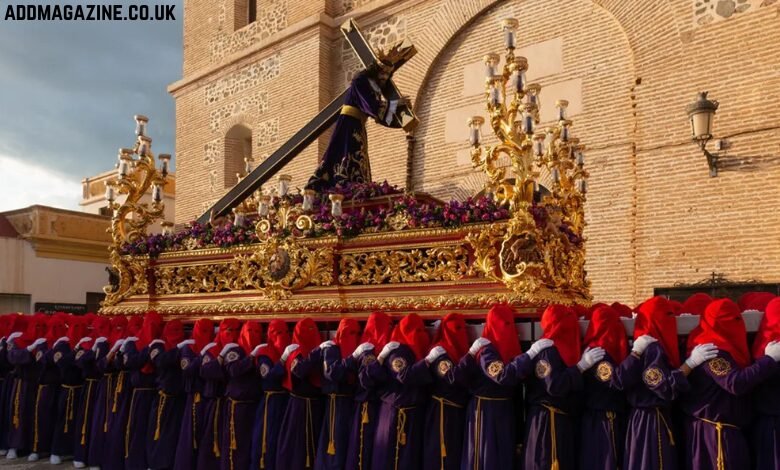Semana Santa, or Holy Week, is one of the most significant religious and cultural events observed in many countries, particularly in Spain and parts of Latin America. In 2025, Semana Santa will take place from Sunday, April 13 to Sunday, April 20. The celebrations commemorate the last week of Jesus Christ’s life, culminating in his crucifixion and resurrection, and are a time of reflection, devotion, and cultural expression.
This article will provide an in-depth look at Semana Santa 2025, covering its key dates, celebrations in various regions, and what makes this event such a deeply emotional and impactful experience for participants and spectators alike.
The Timing of Semana Santa 2025
Unlike Christmas, which is always celebrated on December 25, Easter’s date shifts each year based on the lunar calendar. Semana Santa always falls in the spring, beginning with Palm Sunday and continuing through to Easter Sunday. The date of Easter is determined by the first full moon after the spring equinox, which is why Semana Santa can occur anywhere from late March to mid-April.
In 2025, Semana Santa will take place later than in 2024, from Sunday, April 13 to Sunday, April 20. While this may seem like a minor detail, it plays a significant role in the planning and timing of events, as many people take time off work to participate in the celebrations or to travel. This year’s late Easter presents a perfect opportunity for a long weekend or even a mid-spring vacation.
Key Dates and Public Holidays
For those living in Spain, Semana Santa 2025 is an opportunity for extended time off. While the dates of public holidays vary by region, there are several common elements. Good Friday (April 18) is a national holiday, meaning it will be observed across Spain. However, some regions extend the holiday period to include other days.
- Holy Thursday (April 17): In several regions, including Catalonia, the Valencian Community, and Navarre, Holy Thursday is also a public holiday, extending the break to four or even five days.
- Easter Monday (April 21): In some areas, such as Catalonia and the Valencian Community, Easter Monday is a public holiday, allowing for an extended break that stretches from Holy Thursday through to Monday.
These extended holidays allow people in Spain to enjoy longer breaks, travel to different parts of the country, or partake in the cultural and religious festivities.
Semana Santa in Spain: Cities and Celebrations
Semana Santa in Spain is famous for its religious processions, which take place throughout the week in cities and towns across the country. These processions, featuring religious statues carried by “costaleros” (bearers) and accompanied by “nazarenos” (penitents) in hooded robes, are both solemn and magnificent, attracting thousands of visitors from all over the world.
Seville: The Heart of Semana Santa
Seville is perhaps the most iconic city for Semana Santa celebrations in Spain. The processions here are both beautiful and deeply emotional. Seville’s streets come alive with the sounds of marching bands playing somber music, and the air is thick with incense. Each procession features a series of religious floats, called “pasos,” depicting scenes from the Passion of Christ. These floats are carried by hundreds of people, and the entire event is a moving tribute to religious devotion.
The Semana Santa processions in Seville typically begin on Palm Sunday (April 13), with crowds gathering to witness the traditional procession of the Brotherhood of the “La Borriquita” (The Little Donkey). This procession marks the beginning of a week full of tradition, faith, and community.
On Good Friday (April 18), the most emotional and significant processions take place. One of the most famous is the procession of the Brotherhood of “La Soledad,” which is characterized by its mournful tone as it marks the death of Christ. These processions last well into the night, and the atmosphere is somber, with the entire city feeling the weight of the moment.
Málaga: A Vibrant Celebration of Faith
Another Spanish city known for its Semana Santa celebrations is Málaga, located along the southern coast. While the processions in Málaga are also marked by deep religious significance, the atmosphere here is a little different. Málaga’s processions are known for being more colorful and festive, with a lively energy that fills the streets.
The main event in Málaga is the procession of the “Málaga Virgin”, which takes place on Good Friday. This procession is led by the Brotherhood of the “Esperanza” and includes large floats carried by hundreds of people. Music plays a significant role in these processions, and many of the floats are accompanied by brass bands that play traditional religious marches. Málaga’s Semana Santa celebrations are a mix of solemnity and celebration, and it is a time when locals and visitors alike come together to honor their faith.
Other Notable Spanish Cities
In addition to Seville and Málaga, other Spanish cities such as Valladolid, Granada, Córdoba, and Zaragoza also hold Semana Santa processions, each with its own unique traditions and customs. Valladolid, for example, is known for its austere and somber processions, while Granada offers a stunning backdrop of the Alhambra during its celebrations.
The processions in these cities share common elements, such as the depiction of biblical scenes and the participation of brotherhoods, but each region puts its own spin on the celebrations, making Semana Santa in Spain an incredibly diverse and fascinating event to experience.
Semana Santa in Latin America: A Shared Tradition
Semana Santa is not limited to Spain; it is also widely celebrated in many Latin American countries, where it holds a similar religious and cultural significance. In Chile and Colombia, for example, Semana Santa is marked by processions, church services, and religious observances.
Semana Santa in Chile
In Chile, Semana Santa is observed with great reverence, particularly in the northern regions of the country. Cities like Iquique and Antofagasta hold processions featuring religious statues carried through the streets, accompanied by hymns and prayers. While the festivities are not as large as those in Spain, they still attract a significant number of locals and visitors alike, who come to witness the solemn processions and to reflect on the religious meaning of the week.
Semana Santa in Colombia
Colombia is home to some of the most vibrant and large-scale Semana Santa celebrations in Latin America. Popayán, a city in the southwest of the country, is particularly famous for its processions, which date back to the colonial era. The city is known for its white-painted buildings, and during Semana Santa, these buildings are adorned with religious imagery. The processions here are large and elaborate, featuring hundreds of participants who carry religious floats through the streets.
In Medellín and Bogotá, the celebrations are equally significant, with thousands of people attending Mass and joining in the processions. While the religious observance is at the heart of these celebrations, they also include cultural events, such as music and dance, that highlight Colombia’s rich cultural heritage.
Semana Santa in the UK: A Growing Tradition
In the United Kingdom, Semana Santa is not a public holiday, but there has been a growing interest in the celebrations, especially in cities with large Spanish and Latin American communities. In cities such as London, Manchester, and Birmingham, special Masses and processions are organized by local Catholic communities to mark the occasion. These events may not be as widespread or as deeply ingrained in British culture, but they provide an opportunity for people to connect with their faith and heritage during this sacred time.
The Significance of Semana Santa
While the celebrations, processions, and public holidays associated with Semana Santa are spectacular, the deeper significance lies in its religious meaning. Semana Santa commemorates the final days of Jesus Christ’s life, marking the events leading to his crucifixion and resurrection. The processions serve as a powerful reminder of the suffering, sacrifice, and ultimate triumph of Jesus.
For many people, Semana Santa is a time for reflection, prayer, and spiritual renewal. It is an opportunity to connect with one’s faith and to participate in a long-standing tradition that has been observed for centuries. Even for those who may not consider themselves religious, the solemn atmosphere and community spirit of Semana Santa provide a unique experience that resonates deeply.
Conclusion
Semana Santa 2025 promises to be a memorable and meaningful occasion for those who observe it, whether in Spain, Latin America, or the UK. From the grand processions in Seville and Málaga to the more intimate celebrations in smaller towns, Semana Santa is a time to reflect on the most significant events in Christianity. As the spring weather brings a sense of renewal and calm, Semana Santa offers an opportunity to slow down, connect with loved ones, and appreciate the deeper aspects of life. Whether you are participating in the processions, attending Mass, or simply observing the traditions, Semana Santa is a celebration of faith, culture, and community that transcends borders.
FAQs
1. What is Semana Santa?
Semana Santa, or Holy Week, is a significant religious observance in Christianity, marking the final days of Jesus Christ’s life, including his crucifixion and resurrection. It’s celebrated with processions, masses, and various rituals, especially in Spain and Latin America.
2. When does Semana Santa 2025 take place?
Semana Santa 2025 runs from Sunday, April 13 to Sunday, April 20. The dates shift each year based on the lunar calendar.
3. What are the key public holidays during Semana Santa?
In Spain, Good Friday (April 18) is a national holiday. In some regions, Holy Thursday (April 17) and Easter Monday (April 21) are also public holidays, offering extended breaks.
4. How is Semana Santa celebrated in Seville?
In Seville, Semana Santa is marked by grand processions featuring religious floats carried by “costaleros” and accompanied by “nazarenos” in traditional robes. These processions attract thousands and are a deeply emotional part of the city’s tradition.
5. Is Semana Santa celebrated outside of Spain?
Yes, Semana Santa is widely observed in Latin American countries like Chile, Colombia, and others. These countries have similar processions and religious services, though customs and scale may vary.




